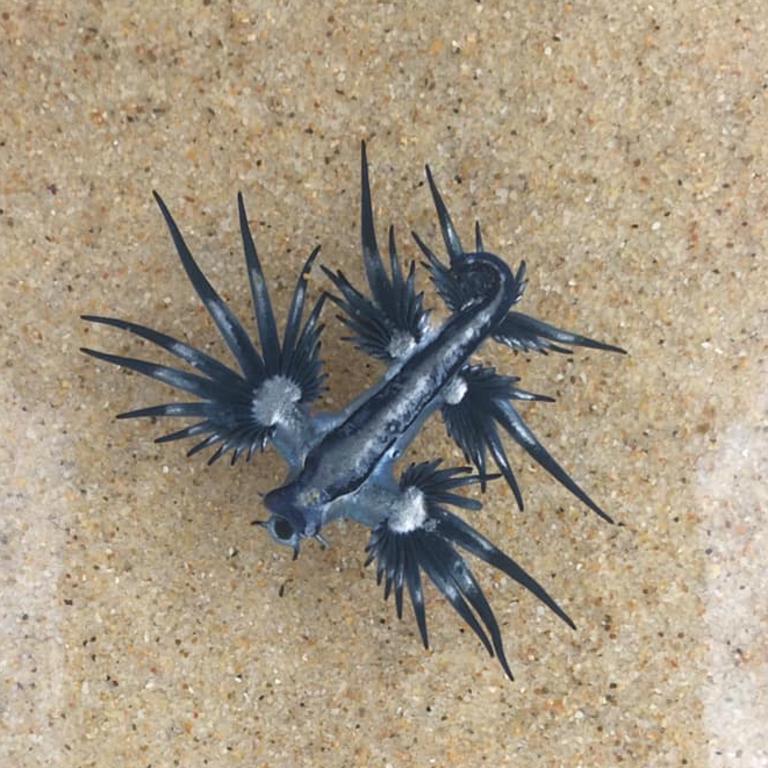‘Blue fleet’ of nudibranchs including bluebottle and blue dragon flood Australia’s east coast
A marine biologist has captured footage of a “blue fleet” of bizarre sea creatures, including one that could carry a potentially deadly sting.
A budding marine biologist has shared vision of bizarre looking sea creatures that have been flooding Sydney beaches.
Final year marine biology student Lawrence Scheele is normally based in north Queensland, but he’s been following the “blue fleet” of creatures as they head south.
Last week he captured a number of different creatures sporting the similar blue colouring.
RELATED: Couple spot huge python on car
RELATED: Outrageous monkey videos slammed
“I was really lucky to have caught them at Long Reef,” Mr Scheel told the ABC.
He came across the sea-dwellers, part of a family of molluscs called nudibranchs, near Dee Why on Sydney’s northern beaches last week.
Among the “blue fleet” is the common bluebottle you might have come across washed up on the shore, or even been unlucky enough to encounter one of their painful stings.
Less recognisable in the fleet are creatures like blue dragons, blue buttons, by-the-wind sailor and the violet snail.
RELATED: Second crocodile captured and killed
RELATED: Toilet spider photo divides internet
The blue dragon is a tiny mollusc around 3cm long, that floats upside down in the water and can deliver a sting even more painful than a bluebottle, which can be fatal for those who are allergic.
The blue fleet of creatures are typically further out to sea, but winds can push them in to shore.
Some members of the blue fleet actually pose a threat to other members of the pack.
Blue dragons and violet snails feed on bluebottles, blue buttons and the by-the-wind sailors.
RELATED: Call for night-time cat curfew

The blue dragon actually absorbs the bluebottles’ stinging cells after eating them.
The violet snail doesn’t carry venom, while the by-the-wind sailor and blue button only deliver mild irritation.
It’s believed their blue colouring is a form of evolved camouflage to help them blend in with their ocean surrounds.
Experts told the ABC the reason for the sudden influx of the animals could have something to do with warming ocean temperatures, while the moon cycle could also play a role.
Wind direction and ocean currents also help determine where the largely directionless molluscs are found.



